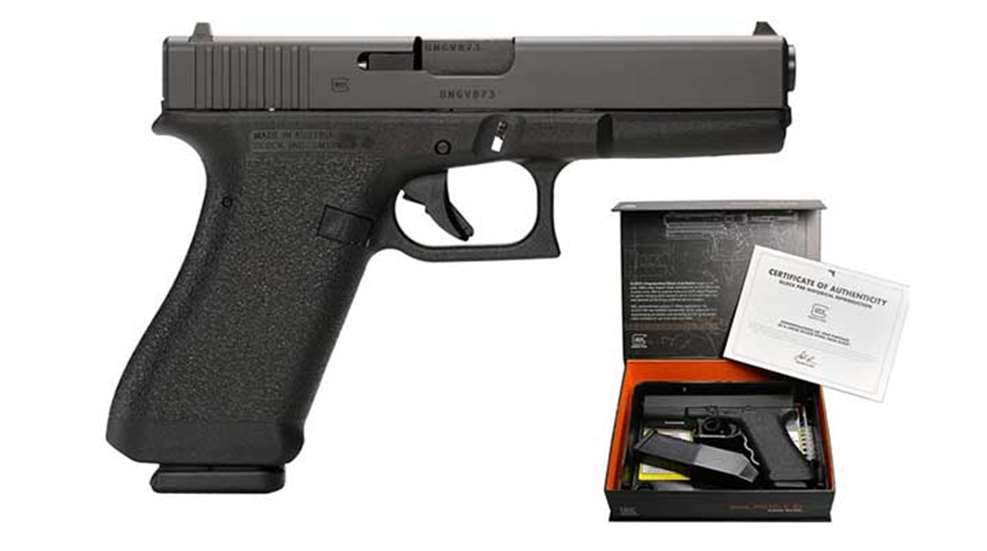
In the movie "The Graduate" (1967), Mr. Maguire, played by Walter Brooke, said the famous line, "There is a great future in plastics." At that time, plastics were brittle, heavy, ugly and often incorporated into low-priced products that exhibited shoddy workmanship. In other words, a joke. The reputation for plastics being used to make 'cheap junk’ would follow them around for years to come.
So imagine the shock experienced by American shooting enthusiasts in 1986 when they saw the Glock G17 for the very first time. A 9mm semi-auto pistol made of plastic? Really? That can't be safe to shoot, can it? Will bad guys be able to sneak these guns through a metal detector?
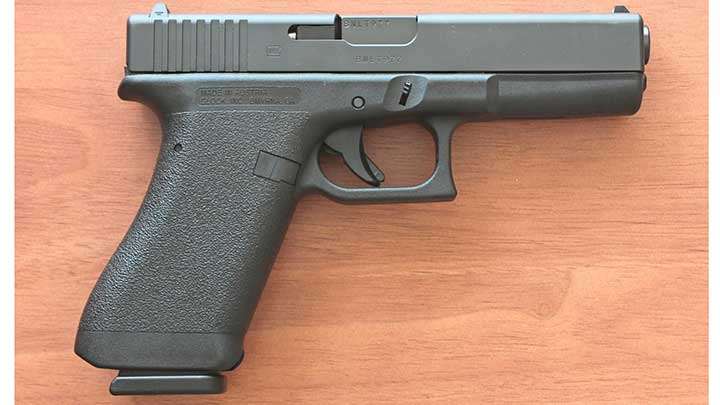
Somebody came up with the nickname "Tupperware Guns," and it stuck. The pistols shipped in plastic boxes with peel-top lids which were reminiscent of the Tupperware food containers many of us grew up with. But the nickname was also a less-than-complimentary comment on the G17’s polymer frame.
The Glock pistol's story began a few years before its American premiere. In 1981, and later in 1982, Gaston Glock submitted his then-unconventional polymer-frame pistol for consideration to the Austrian military. His gun won out over the competition and was adopted as the Pistole 80, or P80 (not to be confused with products made by Polymer 80).
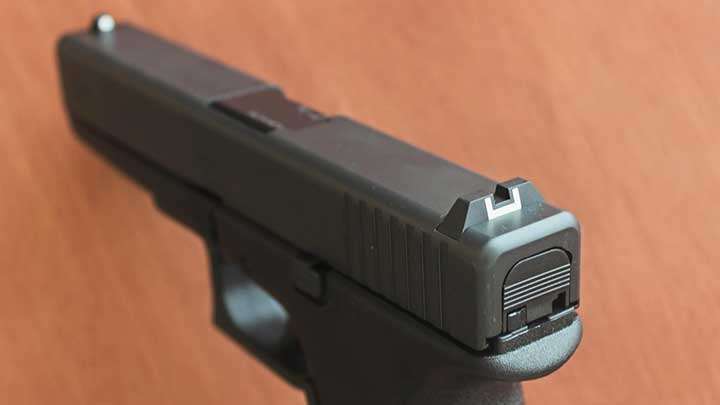
This first-generation Glock would arrive in the U.S. four years later with the designation changed to G17 for the consumer market. By 1988, the Gen 2 version of the G17 was in production. Because the P80 was never imported into the U.S. and the number of early G17s to make it across the border was relatively low, Gen 1 Glock pistols have long been desirable but hard-to-find collectors' items.
That's why Lipsey's spent more than three years working with Glock to develop a faithful recreation of the original Pistole 80. It's not exactly the same gun, but it's as close as they could get it. I'll touch on what did and didn't make it into this exclusive Lipsy's limited edition as we take a closer look.
The P80 arrives in a reproduction of the 1980s-era peel-top container which is tucked into a collector's cardboard box, along with a cable lock and certificate of authenticity. Inside the plastic container is the pistol, two 17-round magazines, a textured magazine loader and a nylon cleaning brush. As it comes out of the the box, the P80 looks and feels spot-on cosmetically.
The matte-black slide exhibits the now-iconic squared-off Glock profile with the flat muzzle and rear straight-line cocking serrations. The Gen 1 slides were treated with a Tenifer finish that has since been discontinued due to environmental regulations. Instead, this gun's slide is finished with a Gen 3 Diamond Like Carbon (DLC) treatment.
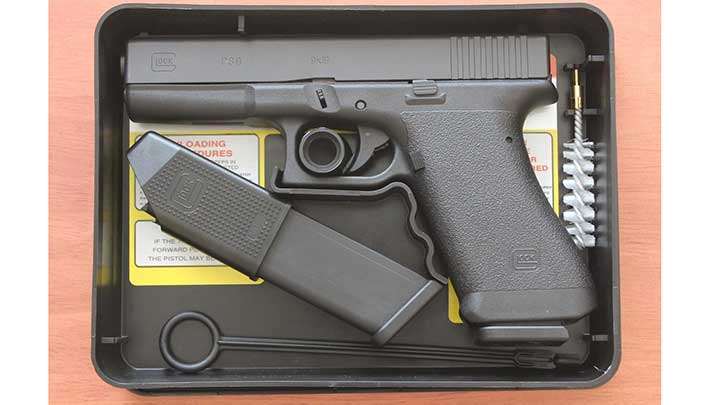
The polymer factory sights haven't changed much over the years. The white-dot front sight is secured with an up-to-date removable nut instead of being pinned to the slide. The rear sight is dovetailed into the slide and drift-adjustable for windage. The extractor is the original flat version.
Some P80s were outfitted with pencil barrels at first, which were later replaced with 14 mm-diameter barrels like the one this replica sports. The 4.49" barrel is cut with polygonal rifling, which is not recommended for use with unjacketed soft lead bullets. The recoil assembly consists of the familiar polymer guide rod with a single captured flat-wire recoil spring.
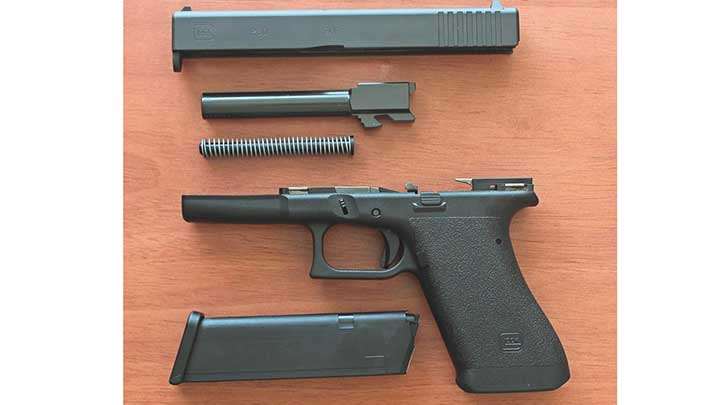
The early P80s that stayed in Austria had their serial numbers stamped in two locations, including the side of the barrel's chamber and on the slide just below the ejection port. In order to meet U.S. importation regulations, the Gen 1 G17 had a third serial number stamped on a metal strip, which was molded into the frame's dust cover. Those regulations haven't changed, so this P80 replica has three serial number markings instead of just two.
The frame's dust cover is smooth and rounded, because molded-in accessory rails didn't become a standard feature until 1998 with the launch of the Gen 3 models. The trigger guards have remained quite similar over the years. However, the face of the Gen 1 trigger guard, which serves as a finger rest, shares the same non-aggressive pebbled texturing as the grip.
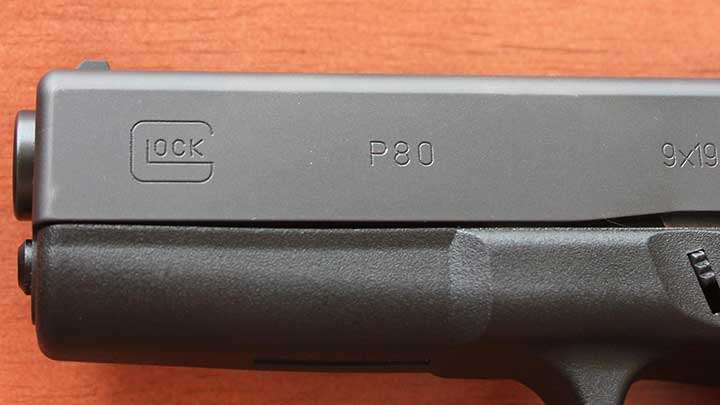
Later models were modified with raised ridge texturing for improved purchase. The trigger face is smooth instead of grooved and features the integral safety lever that is a hallmark of the Safe Action design. The trigger pull of this particular P80 weighed in at 6-lbs. 1-oz. Although the trigger pull is about 9-oz. heavier than today's factory standard, it had a cleaner feel than some Glock triggers I've pulled.
The three external controls are all found on the left side of the frame in typical Glock fashion. The slide lock has remained essentially unchanged through the generations. The slide-stop lever is flat and closely fitted to the frame. The magazine release button feels slightly shorter than current models, with its grooved surface resting almost flush with the flat of the grip frame.
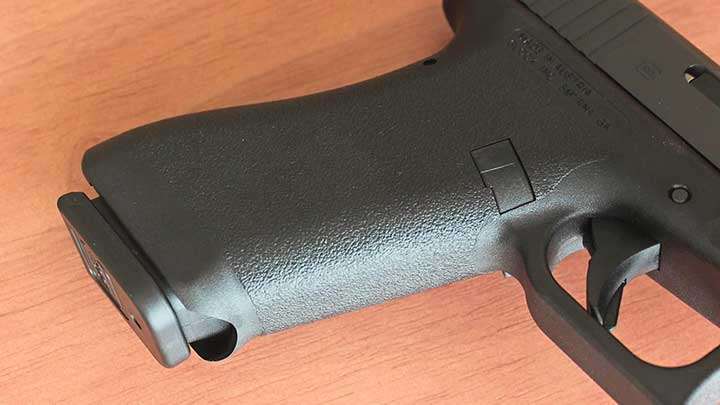
The most noticeable difference of the P80 when compared to later models is the treatment of the grip frame. There are no thumb indentations behind the trigger guard, finger grooves along the front strap or differentiated texturing. Instead, the front strap is straight and smooth, and the entire grip surface features a light, molded-in pebbled texture.
The front of the magazine well has a half-circle cut out that's paired with a gap at the base of the grip's backstrap. These openings aid in grasping the magazine in case it has to be manually stripped out. Lipsey's and Glock did not replicate the Gen 1 magazine configuration. Instead, this version of the P80 ships with a pair of Gen 4 magazines with either 17-round or 10-round capacities, depending on the rules of your jurisdiction.
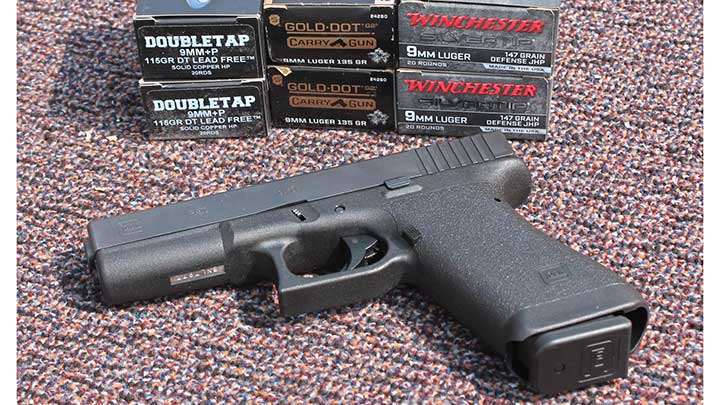
Taking the P80 to the range was exciting, because I've wanted to shoot an early Glock pistol for quite some time. But it was also a bit, well, routine. Glocks are nothing if not consistent. Mechanically sound and properly fitted throughout? Check. Utterly reliable with all ammunition tested? Check. No hiccups, hang-ups or problems of any kind during the entire testing process? Check.
So more than anything else, it came down to the feel of the Gen 1 grip. It doesn’t provide the level of purchase found in later grip configurations, but the absence of finger grooves along the front strap made it a good fit for my somewhat smaller hands. I won't trigger a debate here by saying I think a particular Glock grip-frame configuration is inherently better than another. Hand-to-grip fit is an exceptionally subjective topic, since no two shooting hands are exactly alike. But I will say that I enjoyed working with the Gen 1 grip much more than I expected I would.
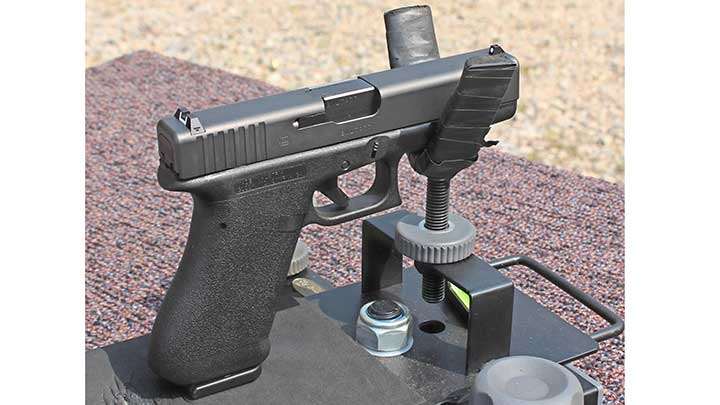
Benchrest accuracy testing was conducted at 25-yards by firing five 5-shot groups into paper targets. Winchester's Silver Tip Defense 147-gr. jacketed hollow points yielded a best single 5-shot group of 3.04" with a five group average of 3.18". Speer's Gold Dot G2 Carry Gun 135-gr. polymer tipped hollow points printed out a best group of 2.91" with an average of 3.05". Double Tap's Lead Free 115-gr. +P all-copper hollow points tapped out a best group of 3.10" with an average of 3.22".
As it turns out, Mr. Maguire was right on the money. Polymer stocks and pistol frames now dominate many facets of the shooting industry. Just as those brightly colored food tubs purchased decades ago are still at work in Grandma's kitchen today, the Glock has successfully passed the test of time.
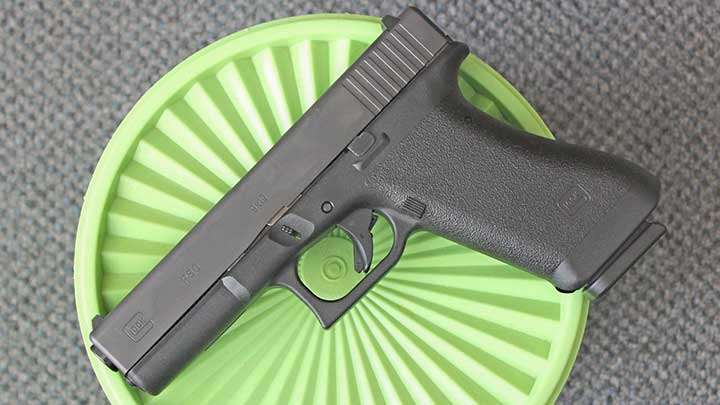
Lipsey's exclusive Glock P80 is a terrific opportunity to grab hold of a piece of history that's more than just another bit of gun-safe tinsel. This gun is not a third-party replica of a Glock. It's a Glock made in Austria using the company's in-house components. You can hide this pistol away and take it out to admire once in a while. I wouldn't be surprised to hear folks say they like the feel of the Gen 1 frame so well that they've pulled the P80 out of their collection and put it to work.
This model will have a first run of 10,000 units, with half of them having already gone out the door in September 2020 and the rest shipping at a later date. It is likely to be a hot-ticket item due to limited availability. If you would like to buy one, the most direct route to take is to visit the lipseys.com website and use the “Dealer Finder” feature to find out which FFLs in your area have one in stock.
Glock P80 Specifications:
Manufacturer: Glock Inc.
Exclusive Distributor: Lipsey's Guns
Model: Pistole 80 Replica (GLP81750203)
Action: Safe Action
Caliber: 9 mm
Slide Finish: Diamond-Like Carbon (DLC) Coating
Grip Frame: Gen 1, Wrap-Around Pebble Texture, No Finger Grooves
Accessory Rail: No
Front Sight: Polymer, White Dot
Rear Sight: Polymer, Dovetailed White Outline
Barrel Length: 4.49"
Overall Length: 7.95"
Height: 5.45"
Slide Width: 1.00"
Grip Width: 1.16"
Trigger: Smooth Face Polymer with Integral Safety
Trigger Pull: 6-lbs. 1-oz. (As Tested)
Weight: 24.8 oz. Unloaded with Empty Magazine
Capacity: 17+1 or 10+1 Rounds
Twist: 1:9.84” RH
Rifle Grooves: Polygonal
Accessories: Certificate of Authenticity, Collectible Cover Box, Peel-Top Storage Box, 2 Magazines, Magazine Loader, Cleaning Brush, Owner's Manual
MSRP: $669





































